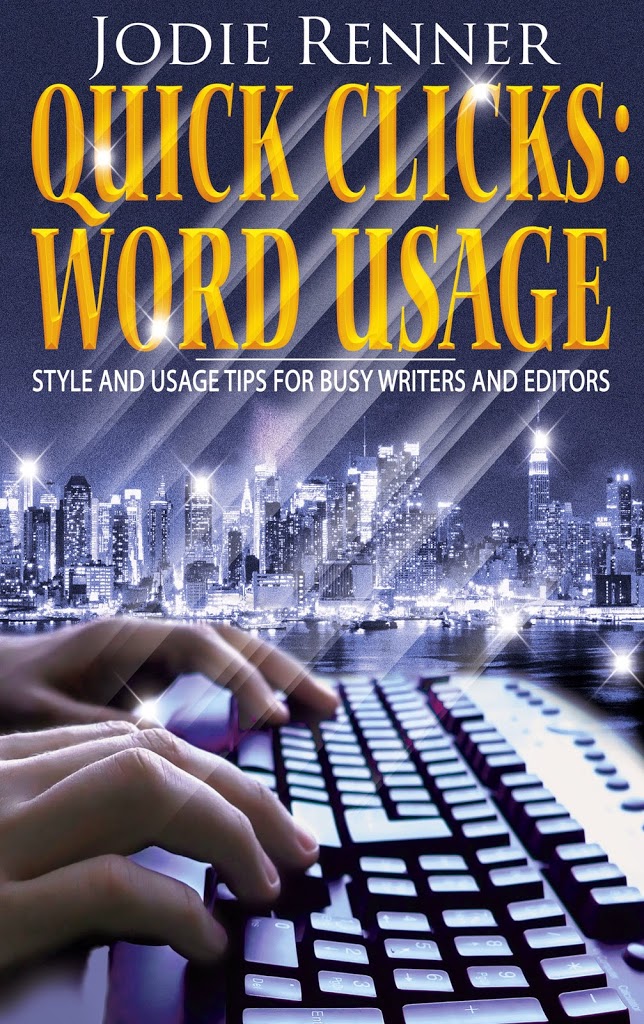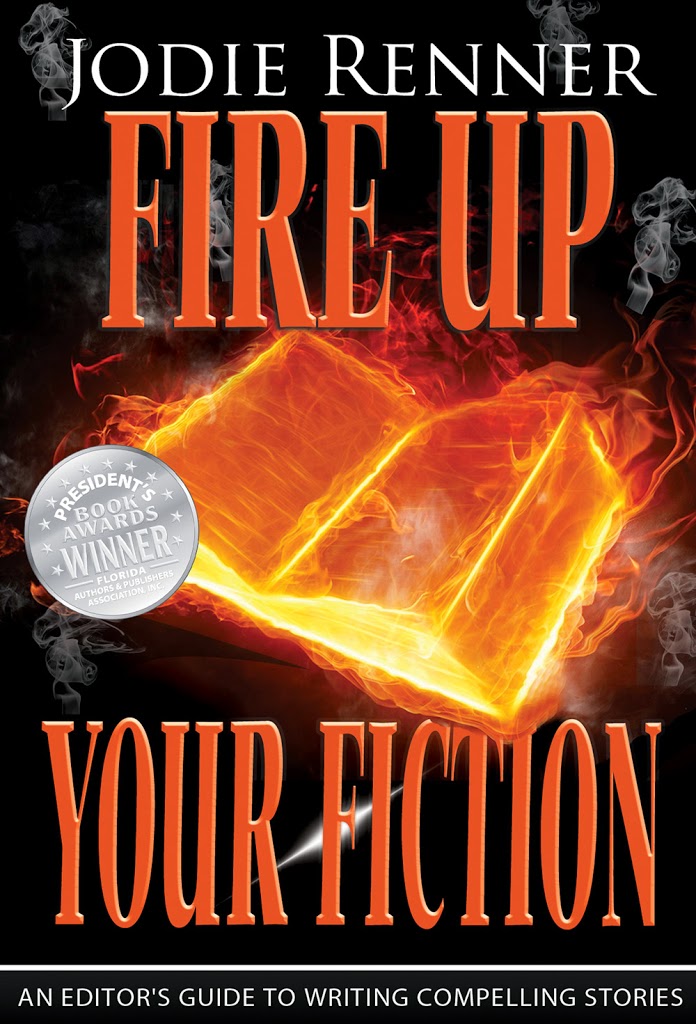 by Jodie Renner, editor, author, speaker
by Jodie Renner, editor, author, speaker
To create a page-turner that sells and gets great reviews, be sure to keep your readers curious and worried throughout your novel. That will keep them turning the pages. You can add tension, suspense, and intrigue to your story very effectively with techniques like foreshadowing, withholding or delaying information, stretching out the tension, and using epiphanies and revelations. (All discussed at length in my book Writing a Killer Thriller.)
Foreshadowing is about sprinkling in subtle little hints and clues as you go along about possible revelations, complications, and trouble to come. It incites curiosity, anticipation, and worry in the readers, which is exactly what you want. So to pique the readers’ interest and keep them absorbed, be sure to continually hint at dangers lurking ahead.
Use foreshadowing to lay the groundwork for future tension, to tantalize readers about upcoming critical scenes, confrontations or developments, major changes or reversals, character transformations, or secrets to be revealed.
Foreshadowing is great for revealing character traits, flaws, phobias, weaknesses, and secrets; building character motivations; and increasing reader engagement.
Foreshadowing also adds credibility and continuity to your plot. If events and changes are foreshadowed, then when they do occur, they seem more believable and natural, not just a random act or something you suddenly decided to stick in there. For example, if your forty-something, somewhat bumbling detective suddenly starts using Taekwondo to defeat his opponent, you’d better have mentioned at some point earlier that he has taken Taekwondo lessons, or else the readers are going to say, “Oh, come on! Give me a break. Suddenly he’s Jackie Chan?”
But for every hint you drop, make sure you follow through later in the novel. Be sure not to drop in what seems like a critical piece of info or object, but ends up not foreshadowing anything. Readers will feel deceived and cheated. (For more on this, Google “Chekhov’s gun” or see my book.)
Also, do be subtle about your little hints. If you make them too obvious, it takes away the suspense and intrigue, along with the reader’s satisfaction at trying to figure everything out.
Some ideas for foreshadowing:
Here are some ways you can foreshadow events or revelations in your story:
– Show a pre-scene or mini-example of what happens in a big way later, for example:
The roads are icy and the car starts to skid but the driver manages to get it under control and continues driving, a little shaken and nervous. This initial near-miss plants worry in the reader’s mind. Then later a truck comes barreling toward him and…
– The protagonist overhears snippets of conversation or gossip and tries to piece it all together, but it doesn’t all make sense until later.
– Hint at shameful secrets or painful memories your protagonist has been hiding, trying to forget about.
– Something on the news warns of possible danger – a storm brewing, a convict who’s escaped from prison, a killer on the loose, a series of bank robberies, etc.
– Your main character notices and wonders about other characters’ unusual or suspicious actions, reactions, tone of voice, facial expressions, or body language. Another character is acting evasive or looks preoccupied, nervous, apprehensive, or tense.
– Show us the protagonist’s inner fears or suspicions. Then the readers start worrying that what the character is anxious about may happen.
– Use setting details and word choices to create an ominous mood. A storm is brewing, or fog or a snowstorm makes it impossible to see any distance ahead, or…?
– The protagonist or a loved one has a disturbing dream or premonition.
– A fortune teller or horoscope foretells trouble ahead.
– Make the ordinary seem ominous, or plant something out of place in a scene. Zoom in on an otherwise benign object, like that bicycle lying in the sidewalk, the single child’s shoe in the alley, the half-eaten breakfast, etc., to create a sense of unease.
– Use objects: your character is looking for something in a drawer and pushes aside a loaded gun. Or a knife, scissors, or other dangerous object or poisonous substance is lying around within reach of children or an assailant.
– Use symbolism, like a broken mirror, a dead bird, a lost kitten, or…
~ A no-no about foreshadowing:
But don’t step in as the author giving an aside to the readers, like “When she woke up that morning, she had no idea it would turn out to be the worst day of her life.” We’re in the heroine’s head at that moment, and since she has no idea how the day is going to turn out, it’s breaking the spell, the fictive dream for us to pass out of her body and her time frame to jump ahead and read the future.
~ Don’t like to plan your story out first? Just go ahead and write your story, then work backward and foreshadow later.
If you hate to outline and just want to start writing and see where the characters and story take you, you can always go back through your manuscript later and plant clues and indications here and there to hint at major reversals and critical events. Doing this will not only increase the suspense and intrigue but will also improve the overall credibility and unity of your story.
And remember to sprinkle in the foreshadowing like a strong spice – not too much and not too little. If you give too many hints, you’ll erode your suspense. If you don’t give enough, readers might feel a bit cheated or manipulated when something unexpected happens, especially if it’s a huge twist or surprise.
And again, the operative word is subtle. Don’t hit readers over the head with it. Not all your readers will pick up on these little hints, and that’s okay. It makes the ones who do feel all the more clever.
For more techniques for adding conflict, tension, suspense, and intrigue to any genre of fiction, check out Jodie’s book, Writing a Killer Thriller.

Jodie Renner is a freelance fiction editor and the award-winning author of three craft-of-writing guides in her series An Editor’s Guide to Writing Compelling Fiction: Captivate Your Readers, Fire up Your Fiction, and Writing a Killer Thriller. She has also published two clickable time-saving e-resources to date: Quick Clicks: Spelling List and Quick Clicks: Word Usage. You can find Jodie at www.JodieRenner.com, www.JodieRennerEditing.com, her blog, http://jodierennerediting.blogspot.com/, and on Facebook, Twitter, and Google+.


Little did I know, when I turned on my laptop this morning, that I would read such a good post.
Thanks, Kris!
Excellent tips, Jodie. There’s also a cousin of foreshadowing called backshadowing. It’s usually an event that has already occurred but affects the future. A Salem witch is burnt at the stake on page 15, while hundreds of years and many pages later, a woman realizes that her new Salem, Mass apartment has a lingering burning smell.
Another common use of backshadowing is to start the story with the ending, then shift back to the beginning with the reader in full knowledge of the outcome but no idea how it all happened. Great tools in the writer’s toolbox.
Thanks for the great tip about backshadowing, Joe! That’s a new one to me.
I hope today won’t be the worst of my life, but I know so little. It’s not even noon.
Excellent blog, Jodie, for new writers and experienced ones.
You know a lot, Elaine! 🙂
Solid advice, Jodie! I just used foreshadowing in a scene, in some dialogue between two criminals who are discussing an upcoming attack. One of them mentions that a certain body part of the soon-to-be victim must not be injured during the takedown. Leaving the reader to wonder (hopefully), “why?”
That definitely sounds intriguing to me, Kathryn! We’ll have to read your book to find out why!
Thanks for this. I like the image of foreshadowing as a strong spice – and it takes an experienced cook to know how much (and what kind) to use. In the best hands it’s an art form. An example I love is the pink teddy bear in Breaking Bad. When it first appears you know it means something, but you can’t possibly quess what. And in the context of the dark doings of the show by that point, its very innocence makes you sure it means something terrible. And then it pays off, and it is terrible!
Yes, that teddy bear is an excellent example, John. Thanks for reminding us of that!
At the moment I think the master of foreshadowing is Stephan King. I just finished rereading his collection of horror novellas, called FULL DARK NO STARS.
The first one is done in the confessional style, a man confessing to killing his wife for her land. You would think it would descend to melodrama, but King is a master of getting the timing perfect. The first real foreshadowing comes a few pages in:
“I will never live in Omaha,” I said. “Cities are for fools.”
This is ironic considered where I now live, but I will not live here for long; I know that as well as I know what is making the sounds I hear in the walls. And I know where I shall find myself after this earthly life is done. I wonder if Hell can be worse than the City of Omaha. Perhaps it is the City of Omaha, but with no good country surrounding it; only a smoking, brimstone-stinking emptiness full of lost souls like myself.”
The rest of the foreshadowing is spot on. Enough to tease us with wondering how this grisly business turned out, but not so over the top it feels cheap.
Wonderful post. As someone who tries to focus on suspense and unease, I’m always looking for ways to get better a foreshadowing, for ways to let it be that faint unease of subtext rather than a giant mallet of BAD THINGS ARE GOING TO HAPPEN!
Thanks for sharing, Elizabeth. Yes, Stephen King is definitely a master at foreshadowing!
I’m heading home from presenting at the SDSU Writers Conference in San Diego and am about to board my flight, so will be incommunicado for several hours.
Thanks for the great reminders, Jodie. I like to keep a list of “foreshadows.” This helps me remember to tie them up later in the book.
You’re welcome, Julie! Glad you find my tips useful!
Thanks Jodie. Masterful foreshadowing adds great tension to s story. My pet peeve is the author aside (“If only she’d known she was going to die that day, she wouldn’t have bothered buying milk…”)
I agree, Clare. The author should refrain from jumping out of the character’s POV and butting into the story! Let the characters tell the story!
Effective foreshadowing contributes greatly to my reading experience. I have just read Joe Nesbo, Ace Atkins and William Landay – all are foreshadowing masters.
As you note, done well it creates a dynamic tension that spans many pages and is hugely satisfying when fulfilled.
Thanks for another great blog!
Thanks, Tom – and Iove the way you phrase the advantages! So well put!
Excellent post, Jodie, and a good topic for me, since I don’t feel I’m an expert on foreshadowing. I love that you included specific examples. I have your Style That Sizzles book — I definitely need to pick up this book as well. (And congrats on making the WD Self-Published awards list!)
Thanks, Diane. The funny thing is, Writer’s Digest emailed me back in December to tell me I’d won Honorable Mention in that contest, but I get so many other emails from WD that I missed it until their follow-up email about a week ago!